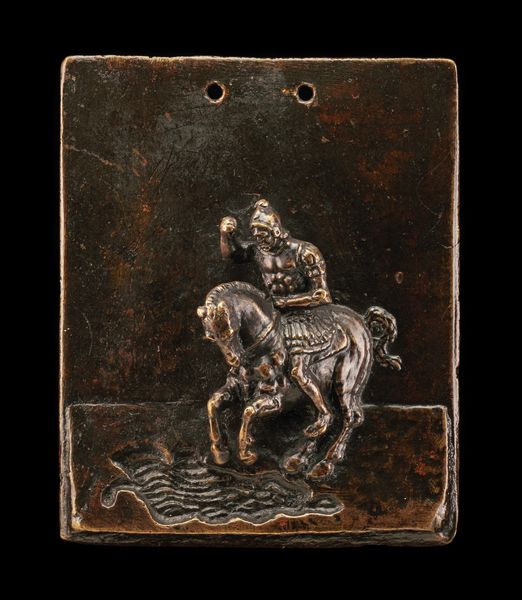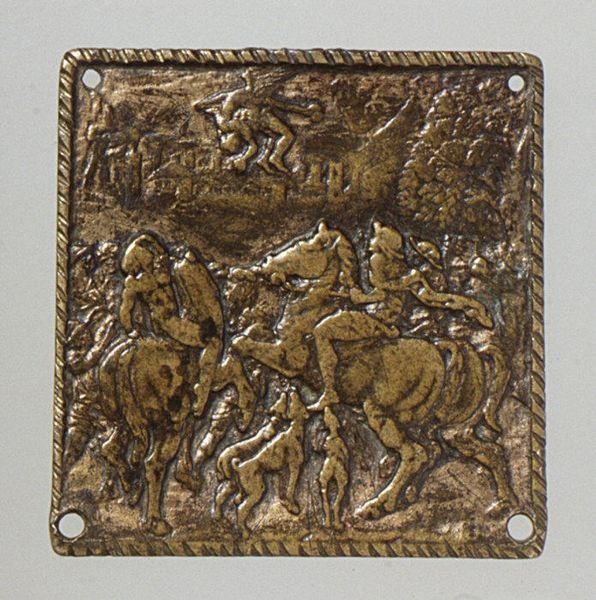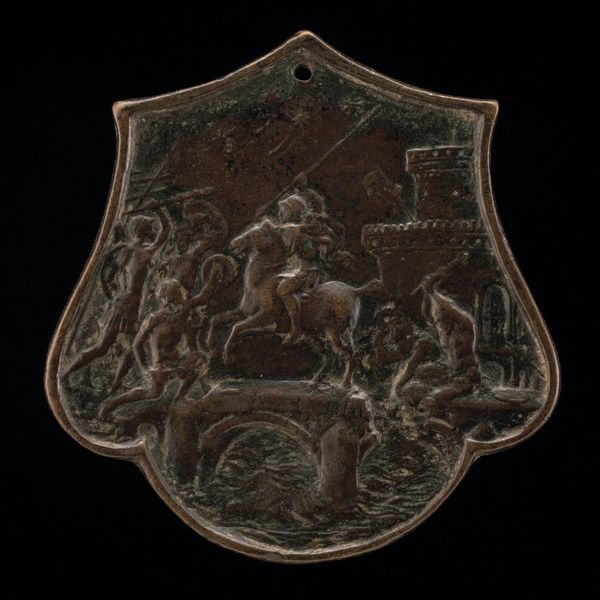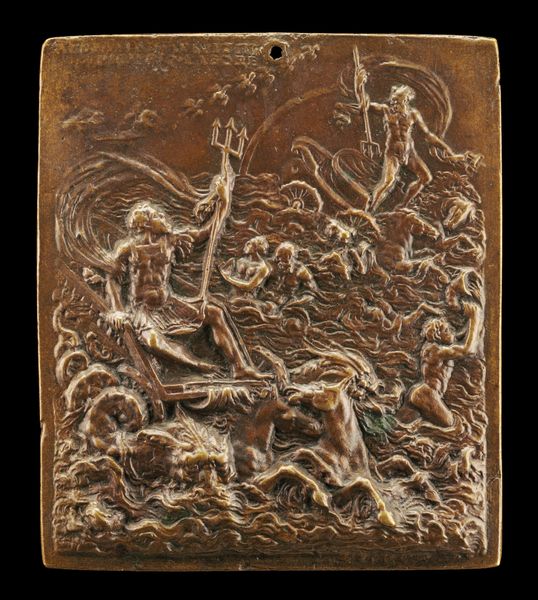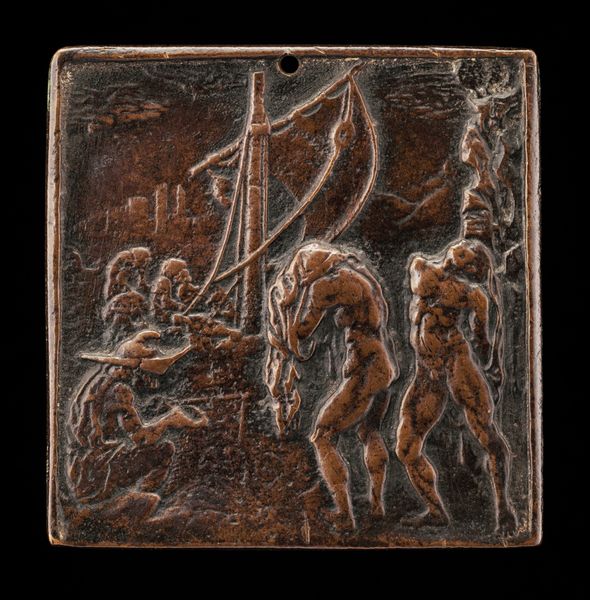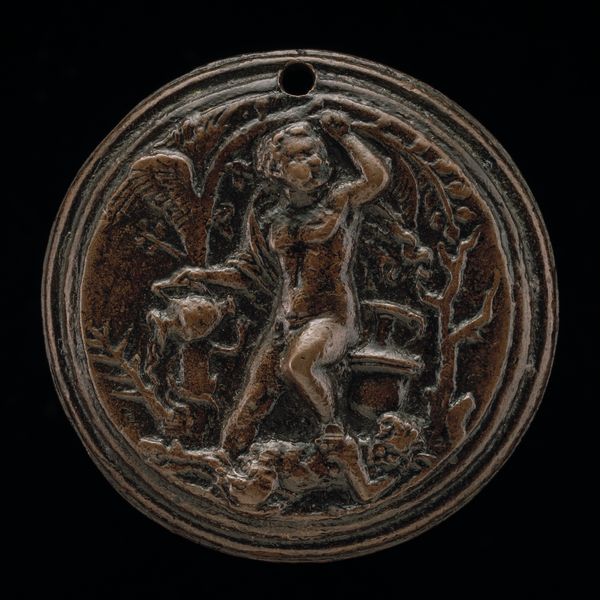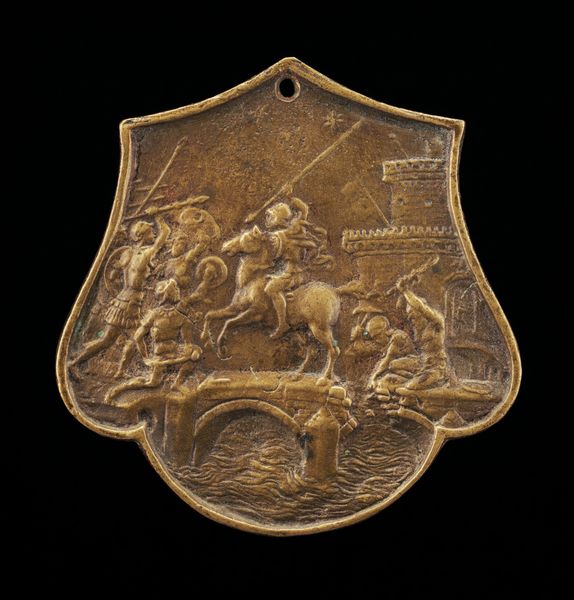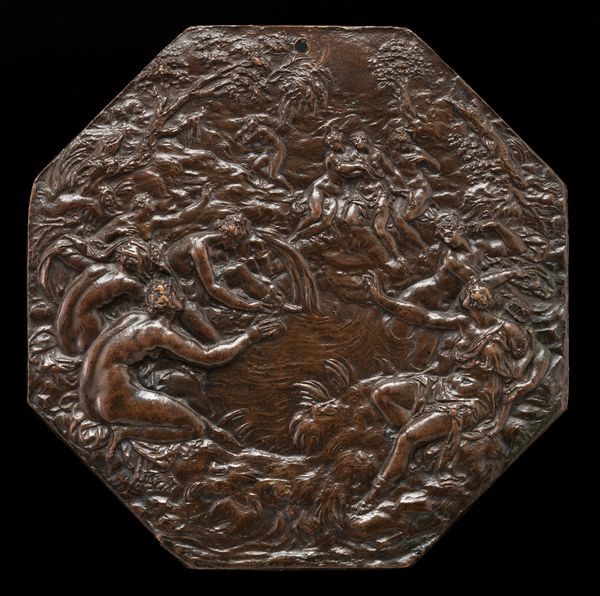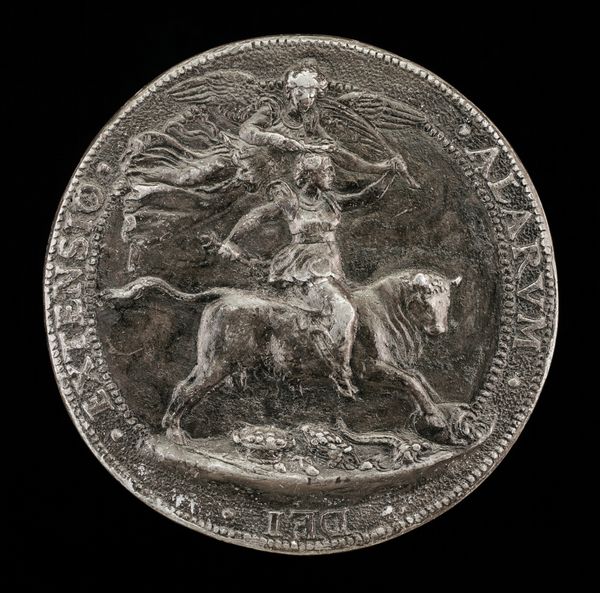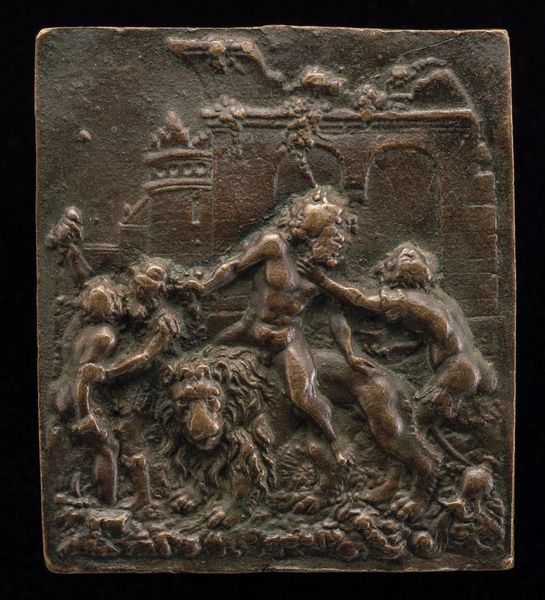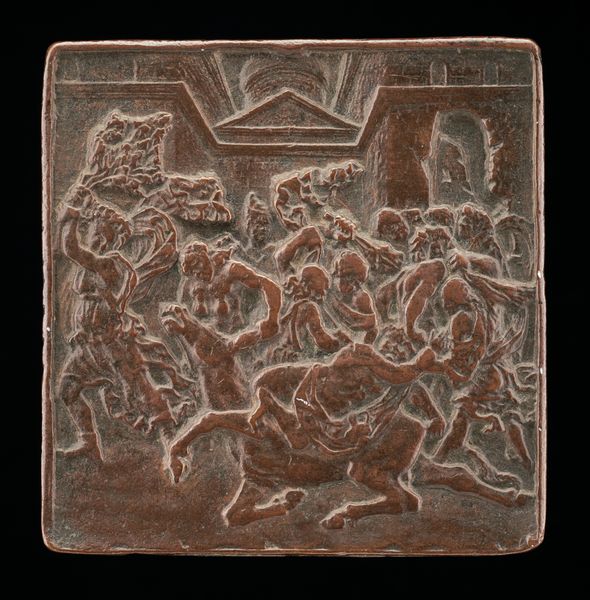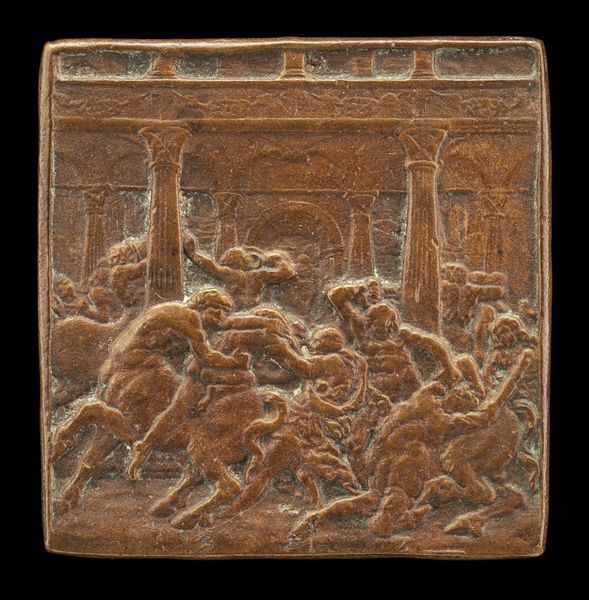
relief, bronze, sculpture
#
narrative-art
#
stone
#
sculpture
#
relief
#
bronze
#
figuration
#
sculpture
#
italian-renaissance
#
statue
Dimensions: overall: 5.35 × 6.07 cm (2 1/8 × 2 3/8 in.) gross weight: 54.08 gr (0.119 lb.)
Copyright: National Gallery of Art: CC0 1.0
Curator: This exquisite bronze relief depicts "Saint George and the Dragon," and it’s attributed to Andrea Briosco, called Riccio, a master of the Italian Renaissance. Editor: Immediately, I’m struck by the dynamic composition. There’s an incredible sense of movement—the horse lunging forward, Saint George leaning into the fight. The limited depth of field also feels very theatrical. Curator: Yes, Briosco was deeply engaged with the narratives of his time. The Saint George legend was hugely popular, offering a potent allegory of good versus evil. We must consider it in the context of expanding merchant trade routes and anxieties of the unknown, external, other. It touches upon the colonial dynamics emerging even then. Editor: I see that, but look at how Riccio uses the bronze medium. The patination, that deep, rich tone, creates such depth. Notice the textural contrast between the smooth, polished bodies and the rough, almost chaotic rendering of the dragon and the landscape. It’s a masterclass in the handling of material. Curator: Indeed, the material and style amplified a critical social ideology, painting St. George, literally in this case, as an agent of 'civilization'. But if we deconstruct it with contemporary theoretical approaches, the representation of the "dragon" arguably symbolizes resistance against enforced systems, or a symbolic response to imperial exploitation of foreign lands, masked under altruistic facades. Editor: A compelling reading! But stepping back, doesn't the confined space heighten the drama? The low relief pushes the scene forward, creating a powerful connection with the viewer. I appreciate that the whole composition can be viewed in almost one or two glances and understood entirely. Curator: I agree; it also functions on a meta level too! Riccio creates art here about the performative nature of power itself and prompts critical questions about whose stories were validated and monumentalized and the consequences of such valorization. Editor: Considering our perspectives, it's striking how an object of beauty, immaculately created using bronze, can speak to so many multifaceted narratives that remain crucial even today. Curator: Exactly. It is a potent example of how our relationship to the past inevitably shapes our critical considerations for navigating complex problems of today's social discourse.
Comments
No comments
Be the first to comment and join the conversation on the ultimate creative platform.
